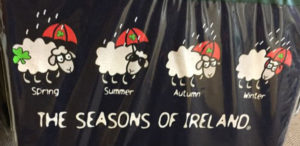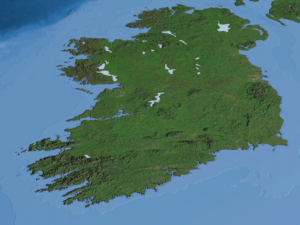Ireland, sir, for good or evil, is like no other place under heaven, and no man can touch its sod or breathe its air without becoming better or worse.
George Bernard Shaw
Travel journal: 2018 Rick Steves Best of Ireland in 14 Days Tour
by Eleanor Farrell
Why Ireland?
My foreign travel is usually peripatetic and sometimes whimsical, fueled not only by visiting friends in faraway places but also by such random inspiration as Chinese dramas, Arthurian fiction, exotic movie bar scenes, El Greco paintings, song fragments. Ireland, however, holds deep family roots, and it certainly took me long enough to visit the land of my Irish ancestors. My great great grandfather Philip O’Farrell came to America from County Roscommon during the Famine, arriving in New York in 1846, with descendants settling mainly in New Jersey. My grandmother’s family (Reillys from County Cavan) arrived a bit later, around 1868. As with most 19th century immigrants, there is little information about their journeys and struggles; they were eager to blend in and create new lives in this new country. One of my cousins has enthusiastically jumped into the genealogy whirlpool looking for photos, dates, and connections, with some success.
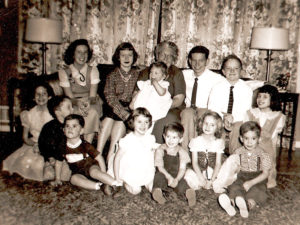
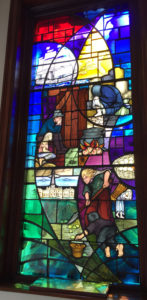
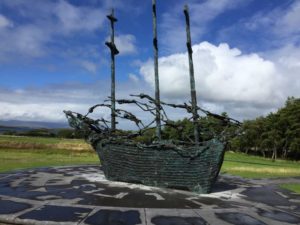
My father spent some time in Northern Ireland during World War II before his infantry unit shipped to North Africa in 1942. I don’t know if he made it south into the Republic of Ireland (probably not, as that country was neutral during the war); but he sent my mother some very Irish embroidered handkerchiefs and a copy of the Irish Digest (containing stories, poems, and other material in both English and Irish).
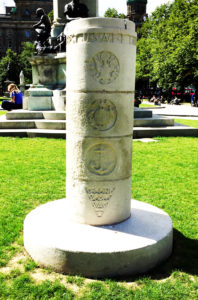

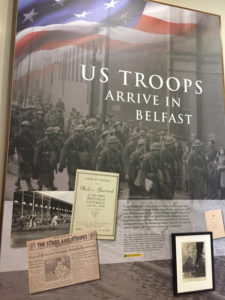
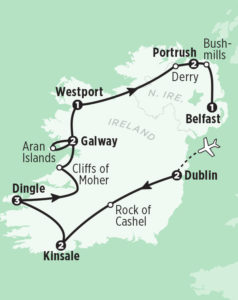 In my youth I might have gone solo, rented a car and borrowed a tent, and wandered the countryside, but those more energetic rambles are behind me. I dug through a selection of itineraries offered by various agencies offering small travel groups, and decided on a Rick Steves tour that seemed to cover more of the island and include the largest variety of locations, including both the Dingle peninsula (a recommended destination) and some stays in Northern Ireland. I’ve traveled with Rick Steves before (not personally, duh), and knew that the group members would be compatible and the guides exceptional. I was not disappointed. We met in Dublin, and the tour ended in Belfast. I then returned to Dublin by bus (an easy journey) and added a few days to explore the city further and to visit Tara and New Grange, which were not included in our tour itinerary.
In my youth I might have gone solo, rented a car and borrowed a tent, and wandered the countryside, but those more energetic rambles are behind me. I dug through a selection of itineraries offered by various agencies offering small travel groups, and decided on a Rick Steves tour that seemed to cover more of the island and include the largest variety of locations, including both the Dingle peninsula (a recommended destination) and some stays in Northern Ireland. I’ve traveled with Rick Steves before (not personally, duh), and knew that the group members would be compatible and the guides exceptional. I was not disappointed. We met in Dublin, and the tour ended in Belfast. I then returned to Dublin by bus (an easy journey) and added a few days to explore the city further and to visit Tara and New Grange, which were not included in our tour itinerary.The July–August weather was pretty decent, mainly temperatures in the 60s–70s and comfortable even in the long evenings. It’s Ireland, of course it rained every day, luckily most of it just “soft weather” although I was a bit sorry for the sheep when we visited Kissale Farm for a sheepherding demonstration (the dogs didn’t seem to mind a bit). We came equipped with jackets and umbrellas for wet outdoor excursions, and spent a lot of time in pubs when necessary.
